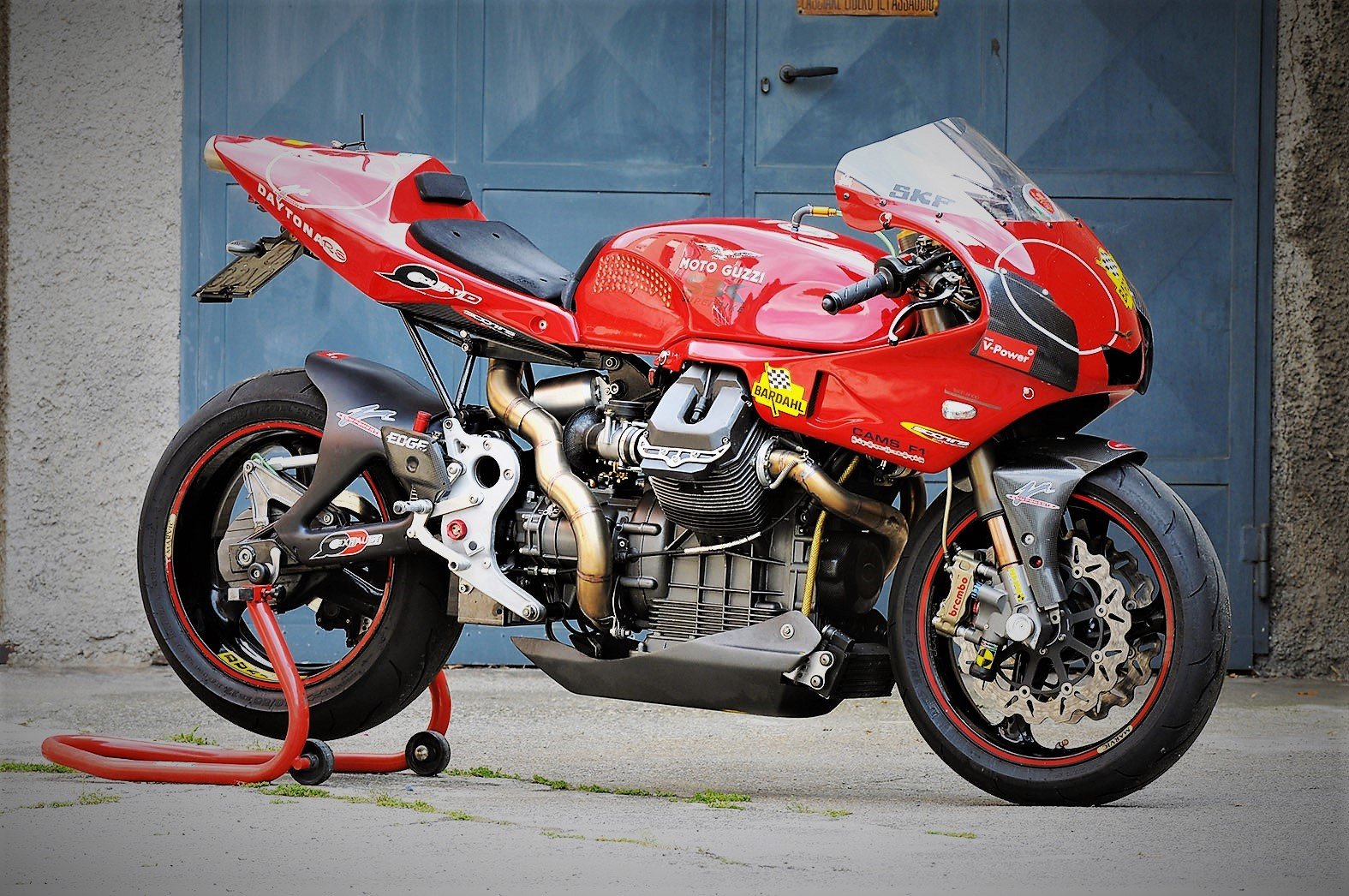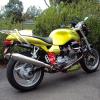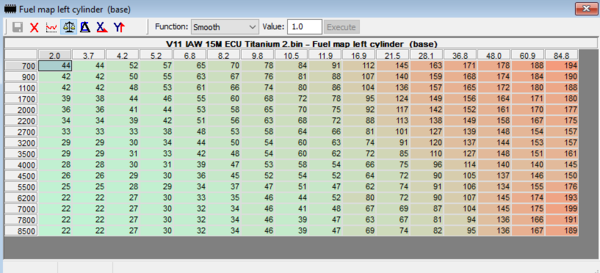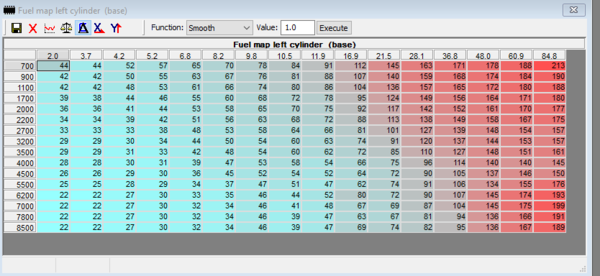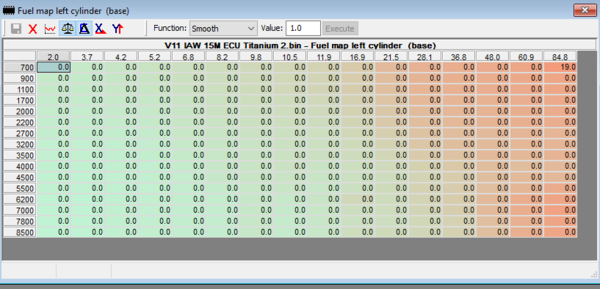-
Posts
4,540 -
Joined
-
Last visited
-
Days Won
234
Content Type
Profiles
Forums
Events
Gallery
Community Map
Everything posted by Lucky Phil
-
I was doing some research for Joe Caruso on the latest iteration of his aftermarket oil pump and was postulating along with him on the reasoning behind using helical gears in the std pump as opposed to straight cut gears. I was looking at one of my pumps on the bench and the only advantage I could see was that as the gear tooth passed the inlet and outlet ports in the housing it did so in a gradual manner due to the angle of the tooth and not open and shut as a straight tooth would. I thought this would lead to less pressure spikes and a more constant delivery. So after about 3 hours of research I found that I was indeed correct and even found a pressure graph demonstrating the differences. Another puzzle solved and the satisfaction of realising that I had worked it out myself and the thought that maybe just maybe all the time I've devoted to thinking about "engineering" over the last 50 years or so has actually taught me stuff. A rare moment indeed. I once read as a teenager all about the pros and cons of Georotor pumps but have forgotten what they were, lol. Time to revisit. Ciao
-
There's quite a bit of loss through a gear pump. There's the tooth tip to housing clearance and the gear end clearance to the crankcases. With the small volume your hand pump is delivering you'll notice these accumulated losses. I understand your reasoning here with priming but it's a bit of an overkill. The oil cooler really doesn't come into it as it's not in the oil delivery system until the thermostat opens anyway although there will be some leakage and that will gradually fill it until the thermostat opens. On a new engine it's worth running the pump off a hand drill when the front cover is off but otherwise not really necessary. Ciao
-
Yes pretty much all except the 10mm suspension bolts and engine mount bolts. If you turn the heads out on a titanium fastener you're doing something wrong. The beauty of them is they look exactly the same after 50 years as they did the day they were made. If your keeping your bike long term they are worth the money and if you don't then you just spend an hour or so refitting the original bolts when you sell it and use them on the next bike. The majority of fasteners on just about all bikes is M6X25. I can tell you one thing, aircraft don't use any stinking SS fasteners. I'd use a passive plated steel bolt over a SS one every day of the week. Ciao
-
Only that it makes a poor material for a fastener. It's a boating world thing and they need something that can survive a salt laden environment so put up with the negatives. If you want the gold standard in a fastener then use Titanium. All my bikes have a high percentage of Ti fasteners. Light, strong and ductile so they stretch and hold their tension. SS is too hard and lacks ductility so they don't stretch well so lose tension. Ducati tried them as engine cylinder studs at one time and I mean "one time" and had a recall to replace them after they started failing and they were 10mm studs about 180mm long. Junk for fasteners. Ciao
-
There's a difference between a bench test at room temp and no vibration and a switch operating in a 100 degC vibrating environment. Buy a new switch anyway and check the filter and the oil pump pickup screen and the adaptor plate orings which do go hard after a while. Also have a look at the big ends to see if there is metal squeezing out the sides. If you still have no joy then it's likely you'll need to remove the front cover for a look at the pump and drive. Ciao
-
Why not add the manual recommended quantity of oil and then measure the gap? Then you'll know your in the ballpark. Ciao
-
Just replace it and be done with it. They are a known weak ling and probably should be a "hard time" component any way. Ciao
-
Yes the regulator on the early bikes senses the battery voltage off the lights system power wire which is switched by the headlight relay. On the later bikes it doesn't. Ciao
-
No bike deserves the title of a "special" on colour alone. It needs more than that to be classified as a "special" or "limited edition" in my book. Ciao
-
To use on my bike. Ciao
-
Go and buy yourself a set of quality ring open end spanners, same for screwdrivers, a set of feeler gauges, metric 'T" bars, a set of std Allen keys, a quality 10" adjustable spanner a set of 3/8 drive sockets and 1/4 drive sockets and your pretty much covered. Probably about $250 worth in the states. Forget buying individual items if you are serious about your maintenance. Ciao
-
The biggest misunderstanding with oil is the lower viscosity grade. Mention you run your engine on a 0W-40 and people tell you it's too "thin". They think this because they don't understand engine oil viscosity. Here's a simple explanation with regards to viscosity for a FULL SYNTHETIC oil. A 0W-40 oil has higher viscosity at room temperature than it does at engine running temperature. End of story. So the engine is designed to do it's work at around 100 deg C a temp where a 0W-40 oil is less viscous, or thinner than it is at a room temperature. So how can the W weight possibly be too thin? The confusion is because MINERAL based multigrade oils "shear down" over time so they traditionally ran a higher W number (like 20 weight, 20W-50 for example) so if you didn't change the oil and let it shear down all it's "Viscosity improvers" you still had a baseline viscosity that would provide some half decent engine lubrication. You had a floor viscosity level. Modern full synthetic oils simply don't shear down like that so you can use a W viscosity that's very low (remember still more viscous than it is at running temp) to provide much better cold start and cold temp protection and performance because you don't need the "safety net". You can actually use an oil closer to what the engine needs at start up and still have the hot end needs met as well. Ciao
-
It doesn't matter as long as the "loop" is intact. Whatever works best for the shortest length of hose with the biggest radius bends and least stress on the fittings. Stock routing on many things isn't necessarily the best option but sometimes just the easiest way for the production line assembly. Use you engineering judgment. Ciao
-
Yes but it can be translated to the RC .bin file manually via Tunerpro and loaded. Same as I transposed the Centauro maps from a 16M ecu into a 15M ecu. Ciao
-
Can't remember John was one 3% everywhere and one 6%, can't remember. When I found out what they were I dismissed them as a bit of a joke at the time and I haven't got the spare brain capacity to retain details about junk. Clearly adding a flat %age over the entire map is not a tuning exercise worth paying a truck load of extra cash for. Ciao
-
Why? I don't think you can make those generalisations. I've run literall dozens of bikes over the years with everything from a pair of race cans to full race systems on the std maps and not one of them had a running issue, not one. As a matter of fact my Ducati 1198 has run a Mega expensive and beautiful Full titanium Akrapovic system for years as did the 1098 before it with no changes. Akrapovic even advise on their website no mapping changes required. Would any of them make better torque and power with a dyno tune? Almost certainly, but that doesn't mean they wont run well without mapping adjustments especially when just using on the road. I had people all over the place warning me my engine would blow up on the 1098 and 1198. I ignored them of course and both were used on the road and track without problems and carburated fine . As I said before the "kit ecu" thing is more a way of extracting additional money from customers and in the case of the Termi one was just a blunt instrument anyway just adding 3 or 6% everywhere, can't remember now. Just about everyone on this board running free flow mufflers would have done or is now running without any mapping changes including me when my bike had a std engine. Install the Mufflers and see how it runs. Ciao
-
A work colleague of mine bought a second hand low klm RX8 for his wife. All good till 80,000klm and he started complaining about very hard starting when cold. He did lots of work on it such as plugs, ignition leads other stuff, very frustrated. He eventually took it to a Mazda Rotary specialist. He walked in the door and saw 3 RX8's sitting there with the engines out. He explained to the specialist his issue and he said straight away, "yep it needs a rebuild". Apparently it's typical and the rotary engine and they only go around 75,000 klm before requiring new seals and rotors at the very least, so basically a full rebuild. The other three cars there were in for the exact same issue. He had it rebuilt and sold it off. I've driven an RX3 and it was quite awesome at the time but I don't think the Rotary is a practical proposition even in a track bike personally. Ciao
-
From the album: lucky phils V11
-
From the album: lucky phils V11
-
Nope, not the one I'm looking at. Here's the Delta image of the 2 maps, a std V11 Sport from 2000 and the Titanium 15M map. So a differences comparison between the 2. As you can see, variations are zero. Ciao Base map Titanium
-
From the album: lucky phils V11
-
What makes people thing these "special kit" ecu's and their "special mapping" are so "special". Ducati Termi kit ecu's were rubbish and just added fuel everywhere and you paid big bucks for the privilege of getting nothing. It was 99% marketing and feel good factor. This one has an extra 200rpm, big deal, it's a rounding error change. All ecu mapping is one big compromise as it's designed to work globally with different fuels and safe on all bike variables. Mapping a std ecu on an individual bike on a dyno is the only way to truly optimise the mapping. You can get decently close swapping custom maps but never optimal for each particular bike on local fuel. I've compared the std 2000 V11 mapping and the "Titanium" mapping and the only difference I can see is the Titanium mapping from 4000rpm and 36.8 degrees of throttle has between 3 and 5 deg more ignition advance, that's it. The rpm limit is the same as the std 2000 V11 Sport map. Massive waste of money from what I can see. Ciao
-
Here's one that does and what I use in my Daytona engine. Read the description also. I think on the Penrite sight these some good technical stuff from memory as well. You really need to dig and research more these days than you did 10 years ago. Back then it was all out there. https://penriteoil.com.au/assets/pis_pdfs/MC-4ST 10W-60 (100percent PAO & ESTER) .pdf
-
Yep, just. Ciao

